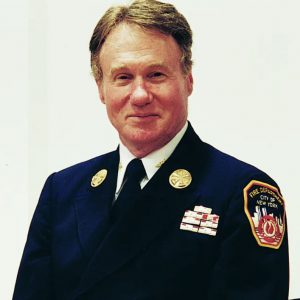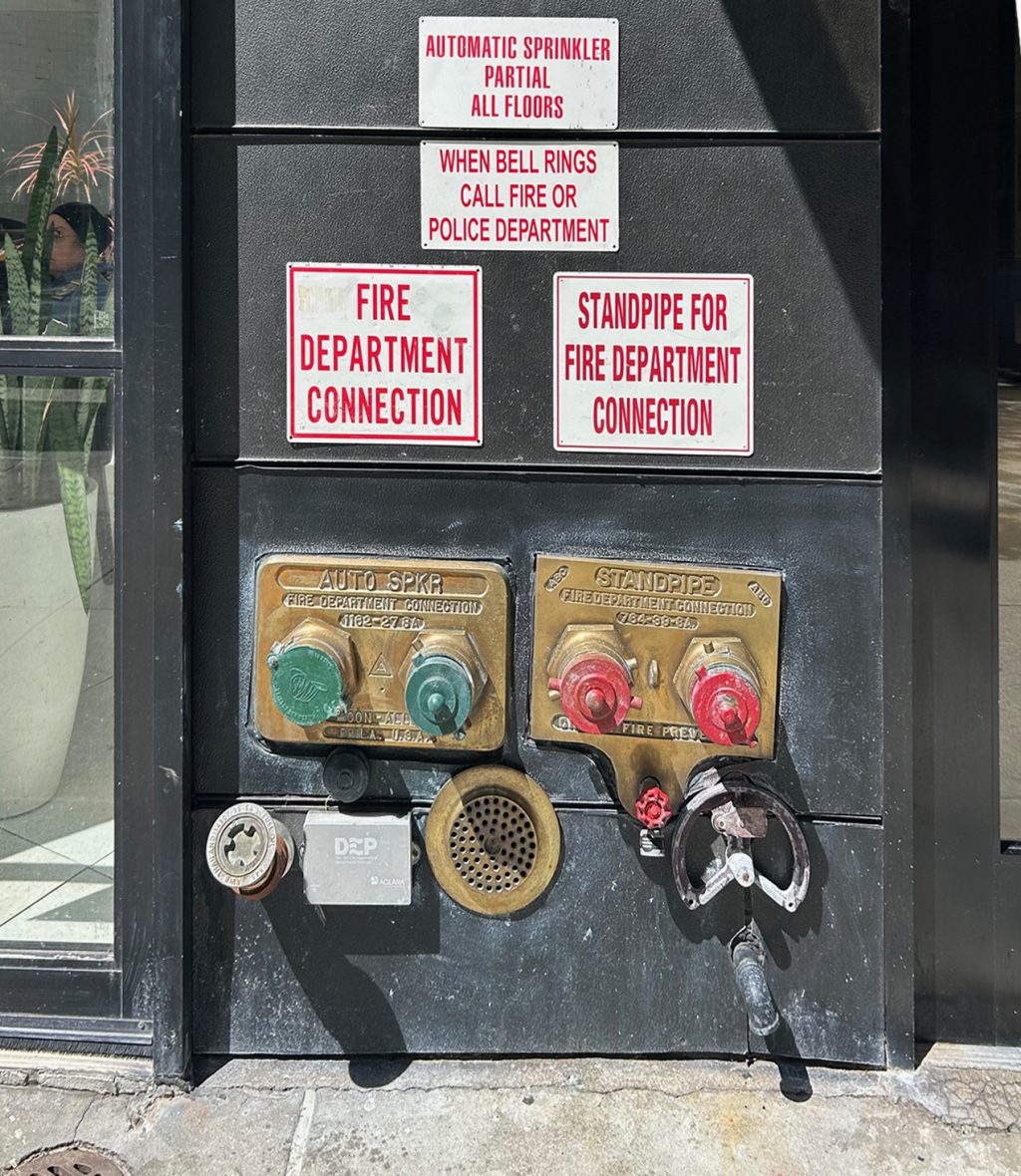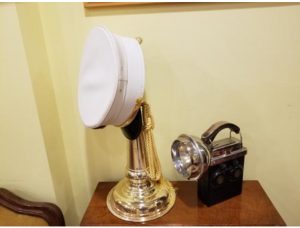
FDNY Chief Vincent Dunn
Soaring, contemporary buildings made of glass and steel that look so light they might fly away are no match in terms of the fire resistance of an older skyscraper like the Empire State Building built 1930-1931. Fire resistance of the newer structure’s lighter materials pale by comparison with the dense mass of concrete, according to Vincent Dunn, a Chief of the FDNY who served as a firefighter for 43 years until he retired about 20 years ago.
Dunn’s contributions to firefighting include his role as an investigator in the collapse of the World Trade Center towers in the terrorist attacks of 2001. His 12 books on firefighting cover every aspect of fighting fires in urban buildings. Dunn said he loves photography, and he’s included images made by outstanding photographers in his books. His titles include Collapse of Burning Buildings, Safety and Survival in the Fireground, and Fire-The Battlespace Enemy.
 Dunn noted that many of the chapters in his books are drawn from articles he wrote over 38 years for Firehouse Magazine after Firefighter Dennis Smith, author of the bestselling Report from Engine Company 82, asked him to become a contributing writer to his magazine.
Dunn noted that many of the chapters in his books are drawn from articles he wrote over 38 years for Firehouse Magazine after Firefighter Dennis Smith, author of the bestselling Report from Engine Company 82, asked him to become a contributing writer to his magazine.
Dunn’s books are used in the training of today’s firefighters as are the numerous videos and podcasts detailing best practices in firefighting. Dunn is known as one of the very few godfathers of firefighting.
Though for the past 60 years he’s lived in the house, he and his wife, who passed away five years ago, raised their two children. He might be considered an honorary Upper West Sider, having commanded a unit that stretched from 34th Street on the West Side to 125th Street. His firehouse Division 3 was on West 77th Street between Broadway and Columbus Avenue.
If he gives the impression that there is never enough fire protection, Dunn said, his fierce stance is both true and slightly exaggerated to make a point. The city has good buildings, the majority meeting minimum standards, but still, it’s often just minimum, bowing to the costs that burden the real estate industry.
And the technology of standpipes, sprinklers, and fire hydrants raises the question – how does this equipment work? How effective is it? So, looking around the Upper West Side for examples of fire engineering technology the FDNY depends upon to combat fires in high-rise buildings, it’s clear that there are standpipes (on every street), and many are installed into the side of buildings.
Just consider one example, the standpipe and sprinkler units at the 30+ story multi-use Bel Canto building at 1991 Broadway and 68th Street are located to the right of an entry into a space that serves as a Privately Owned Public Space (POPS). There are two twin hose hook-up devices (basically water inlets) built into the building. The green one is the sprinkler, the red is a fire hose standpipe. These are mandated by the Department of Buildings. Some buildings have combined sprinkler/standpipe inlets painted yellow.
It is likely that the sprinkler/standpipe hose hookups were used for a grease fire that broke out in January 2013 at Ollie’s Noodle Shop, causing evacuation of the building and the Apple Store next door. Ollie’s never reopened after the fire in which no one was hurt.
 Basically, in the event of a fire, hoses are attached to both sprinkler/standpipe units. Water is pumped into them from the hydrant through the fire truck pumps. Water pumped into the sprinkler automatically releases water in a specific area only near the fire. The heat of fire activates a fusible sprinkler head. Sprinkler water spray extinguishment is likely to happen more quickly than a firefighter’s hose can extinguish a fire on the 30th floor. Firefighters must take an elevator, connect a folded-up hose to a standpipe outlet, and then search in smoke for the fire. There is also water stored in roof tanks, but this is considered a backup supply.
Basically, in the event of a fire, hoses are attached to both sprinkler/standpipe units. Water is pumped into them from the hydrant through the fire truck pumps. Water pumped into the sprinkler automatically releases water in a specific area only near the fire. The heat of fire activates a fusible sprinkler head. Sprinkler water spray extinguishment is likely to happen more quickly than a firefighter’s hose can extinguish a fire on the 30th floor. Firefighters must take an elevator, connect a folded-up hose to a standpipe outlet, and then search in smoke for the fire. There is also water stored in roof tanks, but this is considered a backup supply.
Now well into his 80s, Dunn renews his Facebook with new posts six times a day. He is compiling this content into a graphic publication he expects to be out by the end of the year with chapters corresponding to key topics in his textbooks. Readers interested in more information will be able to link to relevant book topics he covered in depth.
Dunn notes that both of his children are artists, like his late wife. He’s pleased to be working with his daughter, who provides graphics and drawings for his books; she earlier had a corporate career as a designer/manager. His upcoming book will be in a format likely to appeal to readers who prefer short, to-the-point content. Is his house filled with memorabilia from his firefighting career? Not at all. “The only thing I have is an old handlight and a ceremonial bugle.”
Vincent Dunn’s books are available on Amazon, http://www.vincentdunn.com/
